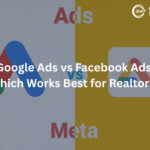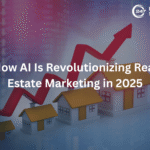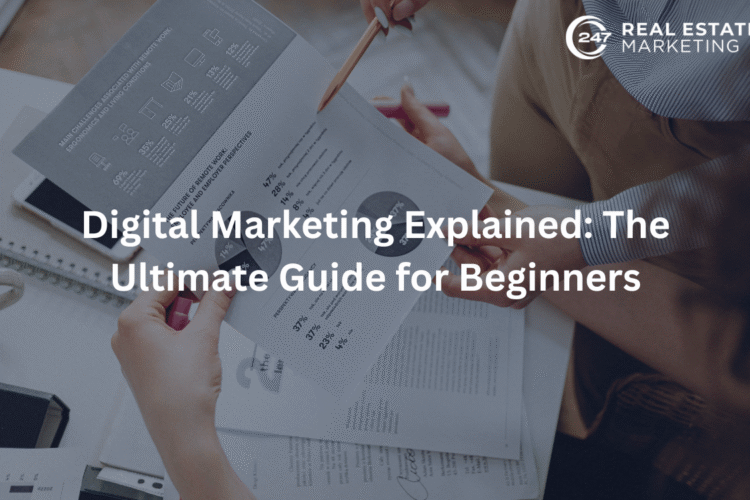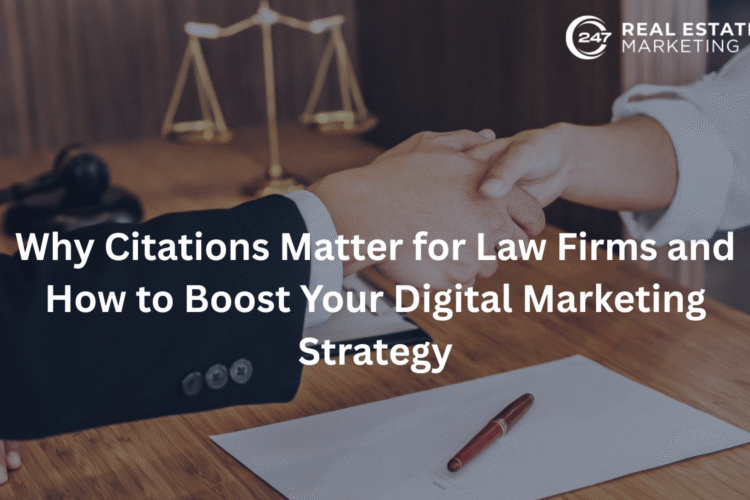
The real estate playbook has changed more in the last two years than in the previous ten. Buyers now begin and often complete most of their journey online, while sellers expect data-driven exposure, rapid feedback, and measurable ROI from every marketing dollar. In 2024–2025, the firms winning listings and closing faster are those embracing AI, immersive media, precision paid traffic, and messaging-first lead nurturing. Below are the digital trends you can’t ignore and practical ways to put them to work for your next Real Estate lead.
1) AI-Driven Personalization Moves from Nice-to-Have to Non‑Negotiable
Artificial intelligence is no longer experimental. Analysts estimate AI could automate ~37% of tasks across real estate functions and unlock ~$34B in operating efficiencies by 2030 freeing teams to focus on relationships and negotiation, while machines handle routing, recommendations, and response.
Market trackers also report rapid adoption: industry summaries point to major revenue and cost gains from AI in marketing, lead scoring, chat, and pricing intelligence alongside double‑digit growth forecasts for AI solutions in real estate through the early 2030s.
What it means for marketing:
- Personalized search + recommendations: Use AI tools to match buyers to properties by budget, lifestyle, and micro‑location signals (schools, commute, amenities), then automate drip content that reflects those preferences.
- 24/7 lead capture with chat: AI chatbots now handle first contact, qualification, FAQs, and calendar holds accelerating speed‑to‑lead and boosting conversion on listing pages, PPC landing pages, and WhatsApp.
- Creative and copy at scale: Dynamic creative optimization (DCO) and AI-assisted ad variants raise relevance across prospect segments, which in programmatic tests has driven meaningful gains in CTR and lower CPAs.
If you partner with a Best Real Estate PPC Agency, ask how they’re using first‑party data, audience modeling, and AI‑assisted creative testing to lower your cost per inquiry and improve lead quality.
2) Immersive Media: Virtual Tours, 3D, and Video as the New Open House
Buyers expect to “walk” a home before they book a showing. Zillow’s 2024 Consumer Housing Trends Report highlights rising demand for digital tools during search, reinforcing how online experiences shape shortlists.
Meanwhile, the virtual tour market is scaling quickly: research estimates the global category at ~$11B in 2024 with a projected CAGR above 30% into the next decade, driven by real estate and hospitality adoption.
On performance, third‑party compendiums and platform case studies point to outsized engagement and lead gains when listings include immersive elements longer time‑on‑page, more inquiries, and faster sales velocity.
What it means for marketing:
- Bake a 60–90 second vertical video and a 3D walkthrough into every listing launch.
- Add interactive floor plans and room measurements to reduce friction and unqualified showings.
- Repurpose short clips on Reels/TikTok/YouTube Shorts to fuel top‑of‑funnel reach.
3) Paid Media Precision: PPC, LSAs, and Programmatic That Actually Converts
Paid search remains a top driver of intent traffic for brokerages and teams especially when campaigns are built around local inventory, financing terms, and neighborhood intent (“3‑bed homes near [school]”). Reports summarizing channel performance show organic and paid search together driving most real estate website visitors, with paid search conversion often clustering in the 1–2% range underscoring the need for tight ad‑to‑landing page alignment.
Two 2024–2025 updates matter:
- Google Local Services Ads (LSAs) for Realtors: LSAs sit above traditional search ads, run on a pay‑per‑lead model, and display “Google Screened” verification improving trust and call‑through rates for agents.
- Programmatic & DCO: Case studies across industries show personalized creatives and automated bidding can reduce CPA and raise recall; when combined with real estate audiences, they’re potent for new‑builds and lease‑ups.
If you’re evaluating partners, shortlist a Top Real Estate SEO Services provider that can integrate with a Best Real Estate PPC Agency to unify keywords, schema, landing speed, and lead routing so paid learnings improve SEO and vice versa.
4) Social Video (Especially TikTok) Is a Lead Engine Not Just Awareness
Short‑form video has become a quiet workhorse for prospecting, with TikTok and Reels surfacing property clips to new audiences based on interest signals, not follower count. Guides and industry roundups note the platform’s outsized engagement and virality, making it ideal for listing teasers, neighborhood explainers, and “what ₹X/$X buys” formats that spark shareable curiosity.
Practitioners tracking “real estate + social” also report that social can deliver some of their best‑quality leads, particularly when paired with clear CTAs, lead forms, and automated DMs.
Playbook:
- Post 3–5 short videos per listing cycle: exterior hook, kitchen/bath hero, neighborhood POV, and a “3 things to know before you tour.”
- Pin buyer/seller education videos to profile to build authority and inbound DMs.
- Use native lead forms or link to a fast, mobile landing page with instant scheduling.
5) Messaging‑First Nurture: WhatsApp and SMS Close the Speed‑to‑Lead Gap
In markets like India and increasingly elsewhere WhatsApp is the most responsive channel for real estate. Benchmarks and provider reports cite sky‑high open rates (often ~98%), strong click‑through (45–60%), and conversion advantages over email or SMS when businesses use WhatsApp Business or the WhatsApp Business API.
For teams handling high inquiry volume, WhatsApp chatbots and automation can qualify budgets, share brochures or 360° tours, and book site visits instantly keeping human agents focused on hot prospects.
What to do next:
- Connect your lead forms, PPC, and LSAs to WhatsApp autoresponders with property packs and pre‑qualification questions.
- Build segmented broadcast lists (first‑time buyers, NRI investors, downsizers) to deliver relevant inventory updates and launch offers.
6) Email Still Pays but Benchmarks Have Shifted
Email remains essential for nurturing timelines measured in months, but “opens” are a fuzzier metric post‑privacy change. 2024–2025 benchmark studies advise focusing on click‑through rate (CTR), click‑to‑open rate (CTOR), and conversions instead, with median open rates in the low‑40s across many datasets (inflated by privacy protections).
Action steps:
- Use zero‑party data (stated preferences from quizzes/forms) to segment by budget, location, and move timeline.
- Trigger sequences for “price drops,” “new to market,” and “loan options updated,” measuring replies and booked tours not just opens.
7) Data‑Backed Consumer Shifts You Should Build Around
Understanding who’s moving and how they shop lets you prioritize channels and content that convert.
- Internet is universal in the search: NAR’s 2024 Profile shows the internet dominates the home search journey, and buyers are older on average (first‑timers’ median age 38; repeat buyers 61), reinforcing the need for mobile‑first, clear, confidence‑building content.
- Buyers want digital tools: Zillow’s 2024 CHTR highlights a rising appetite for new‑construction info and digital shopping aids think interactive site maps, self‑guided tour scheduling, and transparent pricing calculators.
- Agent value remains high: Despite DIY tools, 88% of buyers and 90% of sellers still work with agents so your digital presence should enhance human service, not replace it.
8) Automation Across the Funnel: From Lead Scoring to Post‑Close Referrals
Marketing automation is now table stakes. Industry summaries tie automation to major efficiency and lead‑quality gains, especially when it orchestrates follow‑ups across email, SMS/WhatsApp, and retargeting based on lead score and engagement.
Blueprint:
- Capture: PPC/LSA/social + instant messaging reply.
- Qualify: AI chatbot asks budget, timeline, location; routes to agent.
- Convert: Send virtual tour + neighborhood quick guide; offer calendar slots.
- Delight: Post‑tour automation with financing content and next‑steps; retarget with DCO ads if inactive.
- Refer: After closing, trigger review requests (vital for LSAs) and referral offer.
9) SEO for 2025: Topical Authority + Experience Signals
Ranking in competitive metros requires more than listings. Build topical clusters around neighborhoods, school catchments, commute times, and lending options. Pair that with Core Web Vitals, first‑party reviews, and entity markup for agents and offices. A partner offering Top Real Estate SEO Services should also integrate your video/virtual tour assets and FAQs to win rich results and map packs then mirror that intel into paid campaigns for full‑funnel efficiency.
10) Measurement & ROI: From Clicks to Closings
Move beyond vanity metrics. Tie campaigns to speed‑to‑lead, appointments set, showings held, and contracts signed. For high‑consideration purchases, programmatic and direct‑response channels often show their value in assisted conversions and call volume so make sure call tracking and conversation intelligence are in place. Industry casework shows that when creative and targeting are personalized, programmatic can materially improve ROAS and lower CPA.
The Bottom Line
Real estate marketing is now a digital database. AI helps you personalize at scale, immersive media turns interest into intent, precision paid media fills the pipeline, and messaging automation closes the speed‑to‑lead gap. Meanwhile, SEO, email, and reviews stitch the journey together with compounding returns. The agents and teams who integrate these threads often with a unified partner for SEO and a Best Real Estate PPC Agency for acquisition are the ones winning listings and delighting clients in 2025.
Next steps: Audit your funnel for gaps in (1) AI/chat adoption, (2) virtual tour/video coverage, (3) LSA/PPC structure, and (4) WhatsApp automation. Prioritize the fixes that shorten time from click to conversation. The future isn’t coming here. Those who adapt fastest will own their market.





